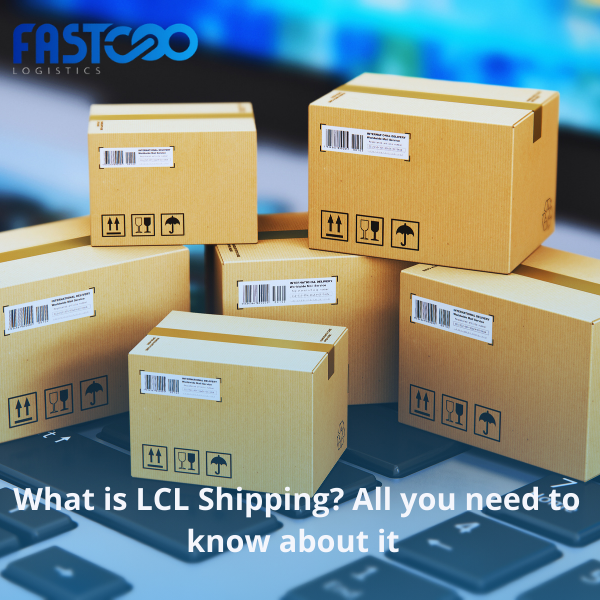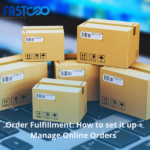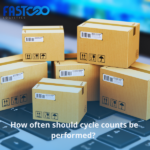What is LCL Shipping? All you need to know about it

What is LCL Shipping? Sea transportation has been the main mode of international trade for centuries and is still a popular mode of transportation due to many factors, such as high load capacity, low cost and reliability in bad weather, and sea freight is also a preferred solution for long-distance shipments, and there are several types of sea freight, And speaking of sea freight, you need to know the difference between FCL and LCL, and in this article we will discuss together All you need to know about LCL Shipping ,then introduce what is meant by FCL Shipping, and then we will show the most prominent differences between FCF and LCL Shipping.
What’s the meaning of LCL Shipping?
It is less than the container load, it is more convenient and manageable for small cargo volumes, by which moderate quantities of cargo belonging to several shippers are accumulated until the container is filled.
Although using an LCL container may be a somewhat slower alternative for ocean shipments, it is cheaper because you share costs with a number of other shippers, so you will not be able to bear the cost of the container alone.you may need to know cost of goods sold
Types of LCL Shipments
Speaking of the types of LCL shipments, we find that there are two types:
1. LCL Shipment in Boxes
In which goods or shipped items are packed in boxes, some accept stacking and others do not, depending on the nature of the shipment itself.
This type is the most economical compared to the other type of LCL shipments, but its main drawback is that in this type of shipment, the shipment is highly prone to damage, due to the accumulation that sometimes occurs.
2. LCL Shipments in Pallets
In which the goods are packed in pallets, the level of safety is higher than the previous type, where all the items are secured by rubber bands or coils as well.
Also, shipping in this type provides ease of handling and therefore the goods are not damaged, especially since of course LCL shipments go through many passes.
Is LCL Shipping the right choice for you?
You may be wondering what the best option for you is.Are LCL shipments right for you or not? Simply, the answer to that question depends on a number of factors that you must consider before deciding whether LCL shipments are the most appropriate fit for your needs, as:
1. The size of your shipment
LCL shipment is most suitable when your shipment volume is from 33 cubic meters or 1200 cubic feet.
2. Shipping time
LCL shipment takes longer than FCL shipment, and this process takes an average of 5 to 7 days, due to a number of factors, the most important of which are:
- Initially your LCL shipment is combined with other LCL shipments that are assigned to the same container.
- The container with all LCL shipments is transported from the consolidation warehouse to the port. you may need to know optimize Warehouse Layout
- After arriving at the port, the container is loaded onto the ship, and once it reaches the destination, the container is moved to another warehouse, where all LCL shipments are separated from the rest of the shipments.
- Finally, your LCL shipment is assigned, released, and transported to its destination.
3. Your shipment passes through more than one point
LCL shipments are known to have more traffic at touch points than FCL shipments, and this is because LCL shipments need to be handled, loaded and unloaded more than once before they reach their final destination, since they contain more than one shipment in one container.
How Does LCL Shipment Work?

As we mentioned, LCL shipping involves the integration of more than one shipment into one container, and the following are the steps that LCL shipping works with starting from packing and preparing the LCL container, all the way to the arrival and receipt of your goods at the port:
First | Transportation to the port
After completing the process of preparing and packing the LCL container, it is transferred directly to the previously agreed port of departure, and after its arrival at the port, it is transferred again to the hand of the shipping line, and then shipped to the destination port.
Second | Recharge the shipment
If you are shipping to a secondary port, your LCL shipment is re-shipped to another container, and sometimes the same container waits some time for more goods to fill the container, before proceeding to its final destination.
Third | Reach the destination
After the LCL container arrives at the destination port, the shipping agent takes the order, assembles the container and transports it to the deconsolidation warehouse, where the goods are individually disassembled.
Fourth | Receive your goods
It is the last step in which the consignee goes to the warehouse to receive his goods, and then the goods will have already been transferred from the deconsolidation warehouse to the final destination warehouse, which is the same from which you will receive your goods.
What is FCL Shipping?
Before viewing the difference between LCL Shipping and FCL shipments, we first need to know what FCL shipment is, It is the full container load i.e. the use of a full container for a single shipment,
Meaning that the container can be loaded and closed safely knowing that everything inside belongs to the same owner.
This type of container is suitable in the event that a large amount of goods has to be exported, and one of its advantages is greater profitability for goods with a volume equal to or greater than 15 cubic meters.
It also provides additional security for the goods thanks to its airtightness and delivery service since the container will make its way directly from its origin to its destination without stopping at ports along the way.
What is the Difference between LCL and FCL?
After we learned what is meant by both LCL Shipping and FCL shipping, there are a number of differences between FCL and LCL, the following are a number of points that illustrate the most prominent differences between them:
- The main difference between FCL and LCL Shipping is that the buyer shares space in a container for an LCL shipment, compared to a full container space rental under an FCL agreement.
- LCL Shipping is a method that combines multiple shipments into one common container, meaning that companies that want to import smaller amounts of inventory can pay for the amount of space they use inside the container instead of having to rent out the entire container.
- FCL shipping is where you pay to use a whole container instead of paying to use a part of it, and when shipping with FCL, there is a fixed price for the container and you have access to all the space available in it unlike LCL Shipping where you only use and pay for a specific space.
- Shipping with LCL Shipping is somewhat economical if you are only shipping small quantities (more than 0.5m³ and 100kg) because you only pay for that small amount of space.
- If you are looking to ship more than about 20m3, FCL is generally the best choice.




